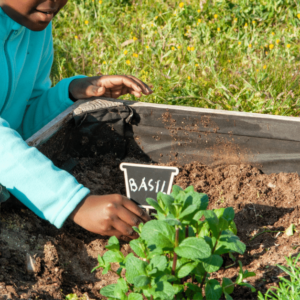In today’s world, the importance of protecting our environment and conserving natural resources has never been more apparent. As individuals, we can make a significant difference by adopting eco-friendly habits that not only benefit our planet but also help us save money. In this comprehensive guide, we’ll explore 10 accessible and impactful eco-friendly lifestyle changes that contribute to a sustainable future while positively affecting your wallet. By making these small yet meaningful adjustments, you can take charge of your environmental impact and inspire others to follow suit.
Ditch Single-Use Plastics

Single-use plastics are a significant contributor to pollution and pose a threat to marine life. By swapping disposable items like plastic bags, bottles, and straws for reusable alternatives, you can save money in the long run and help reduce plastic waste. Invest in reusable shopping bags, a stainless-steel water bottle, and silicone or metal straws. Additionally, try to buy products with minimal packaging, and recycle or repurpose plastic containers whenever possible.
Apart from reusable shopping bags, stainless-steel water bottles, and silicone or metal straws, there are numerous other ways to reduce single-use plastics in your daily life. Swap disposable cutlery and food containers for reusable alternatives, such as bamboo utensils and glass or stainless-steel containers. For food storage, opt for reusable beeswax wraps or silicone food bags instead of plastic wrap or disposable plastic bags.
When shopping, choose products with minimal or eco-friendly packaging, like cardboard or glass. Many grocery stores now offer bulk food sections, where you can bring your own reusable containers and fill them with products like grains, nuts, and spices. This not only reduces packaging waste but can also save you money since bulk items are often cheaper than their pre-packaged counterparts.
Adopt a Plant-Based Diet

Meat and dairy production has a substantial environmental impact, accounting for high greenhouse gas emissions, deforestation, and water consumption. By reducing your consumption of animal products, you can lower your carbon footprint and save money on groceries. Start by incorporating more plant-based meals into your diet, such as lentil stew, veggie stir-fry, or bean burritos. You don’t have to go completely vegan or vegetarian – even adopting a “Meatless Monday” routine can make a significant difference.
Transitioning to a more plant-based diet doesn’t have to be difficult or expensive. Start by incorporating more whole, plant-based foods into your meals, such as fruits, vegetables, legumes, nuts, and seeds. Experiment with different plant-based protein sources, like tofu, tempeh, seitan, and various beans and lentils. These options are not only eco-friendly but often more affordable than meat and dairy products.
When planning your meals, think about how you can replace animal products with plant-based alternatives. For example, try using avocado or hummus in place of cheese in a sandwich, or enjoy a veggie burger instead of a beef patty. Additionally, there are numerous plant-based substitutes for dairy products, such as almond milk, coconut yogurt, and cashew cheese.
Embrace Energy-Efficient Appliances and Lighting

Switching to energy-efficient appliances and lighting can reduce your energy consumption and save you money on utility bills. Replace traditional incandescent light bulbs with LED bulbs, which last longer and use less energy. When purchasing new appliances, look for the ENERGY STAR label, indicating that the product meets strict energy efficiency guidelines set by the U.S. Environmental Protection Agency.
In addition to replacing your light bulbs and appliances, there are other ways to improve the energy efficiency of your home. Proper insulation and weatherstripping can help keep your home warmer in the winter and cooler in the summer, reducing your reliance on heating and cooling systems. Installing a programmable thermostat can also help you save energy by automatically adjusting the temperature when you’re not home or when you’re sleeping.
When using appliances, try to be more conscious of your energy consumption. For example, only run your dishwasher or washing machine when you have a full load, and use the most energy-efficient settings. Air-dry your clothes instead of using a dryer, or use a drying rack or clothesline when possible. Unplug electronics and chargers when they’re not in use, or use smart power strips to reduce energy consumption from devices in standby mode.
Conserve Water

Water conservation is crucial to preserving our planet’s resources, and it can also lower your water bill. Make simple changes like turning off the faucet while brushing your teeth, fixing leaks, and taking shorter showers. Additionally, consider investing in water-saving appliances like low-flow showerheads and toilets, as well as a rain barrel for collecting rainwater to use in your garden.
In addition to the water-saving tips mentioned earlier, there are many other ways to conserve water in your daily life. Use a broom instead of a hose to clean driveways and sidewalks, and wash your car with a bucket and sponge instead of using a hose. Water your garden and plants during the early morning or late evening when the temperatures are cooler, which reduces evaporation and ensures your plants get the most benefit from the water.
When it comes to your lawn, consider replacing traditional grass with drought-tolerant plants or artificial turf. This can save significant amounts of water and reduce the need for energy-intensive lawn maintenance. Another option is to create a xeriscape garden, which uses native, low-water plants that thrive in your local climate.
Practice Sustainable Transportation

Transportation is a major source of greenhouse gas emissions. By opting for sustainable transportation methods, you can reduce your carbon footprint and save money on gas and maintenance. Walk, bike, or use public transportation when possible, and consider carpooling or ridesharing for longer distances. If you need a vehicle, look into purchasing a fuel-efficient, hybrid, or electric car.
If you live in an area where walking, biking, or public transportation is not feasible, there are still ways to reduce your environmental impact while driving. Plan your trips to minimize the distance traveled, and combine errands into one trip whenever possible. Drive at a consistent speed, avoid rapid acceleration and deceleration, and keep your tires properly inflated to improve your car’s fuel efficiency.
If you’re planning a vacation, consider exploring local destinations or traveling by train or bus instead of flying, as air travel has a significant carbon footprint. For longer trips, try to book non-stop flights and choose airlines with more fuel-efficient planes and eco-friendly practices.
Grow Your Own Food

Growing your own fruits, vegetables, and herbs is an eco-friendly way to save money on groceries and reduce your reliance on industrially produced food. Start a garden in your backyard or join a community garden. If you have limited outdoor space, try container gardening or vertical gardening. Growing your own food reduces the need for transportation, packaging, and refrigeration, which all contribute to greenhouse gas emissions.
Growing your own food doesn’t have to be complicated or time-consuming. Start with easy-to-grow plants like tomatoes, lettuce, and herbs, and gradually expand your garden as you gain experience. Use organic gardening practices, such as composting food scraps and using natural pest control methods, to create a healthy, eco-friendly garden.
If you don’t have the space or resources for a traditional garden, explore alternative gardening methods like hydroponics or aquaponics. These systems use water to grow plants without soil, and they can be set up indoors or in small spaces. This allows you to grow your own food year-round while using less water and space than traditional gardening methods.
Reduce, Reuse, Recycle

The three R’s – reduce, reuse, and recycle – are essential for eco-friendly living. Start by reducing your consumption of products and packaging, and opt for reusable alternatives whenever possible. Repurpose items instead of throwing them away, like using old glass jars for storage or turning worn-out clothes into cleaning rags. Lastly, recycle items like paper, cardboard, aluminum, and plastic according to your local recycling guidelines.
In addition to the recycling tips mentioned earlier, consider upcycling items that might otherwise end up in the landfill. Upcycling involves transforming unwanted or discarded materials into something new and useful. For example, turn an old ladder into a bookshelf, or use wine corks to create a decorative bulletin board. Not only does upcycling help reduce waste, but it can also save you money and create unique, personalized items for your home.
When it comes to recycling, familiarize yourself with your local recycling guidelines and facilities, as different areas may have different rules and accepted materials. Additionally, consider participating in or organizing community recycling events, such as e-waste collection drives or clothing swaps, to encourage recycling and waste reduction in your community.
Green Your Cleaning Routine
Many conventional cleaning products contain harmful chemicals that can pollute waterways and harm aquatic life. By using eco-friendly cleaning products or making your own natural cleaners, you can reduce your environmental impact and save money. Try making your own cleaning solutions with ingredients like vinegar, baking soda, and lemon juice. Not only are these ingredients affordable and effective, but they’re also gentle on the environment.
Support Sustainable Brands and Shop Locally
When making purchases, consider the environmental impact of the products you choose. Support companies that prioritize sustainability and ethical practices, such as using eco-friendly materials, reducing packaging waste, and promoting fair labor practices. Shopping locally also helps support your community, reduces transportation-related emissions, and often results in fresher, higher-quality products.
Educate Yourself and Spread Awareness
Stay informed about environmental issues and share your knowledge with others. The more people are aware of the problems facing our planet and the solutions available, the more likely they are to make positive changes. Attend workshops, read books and articles, and follow environmental organizations on social media. Share what you’ve learned with friends, family, and coworkers, and encourage them to join you in adopting an eco-friendly lifestyle.
Wrapping Up
Making a positive impact on the environment and your wallet doesn’t have to be complicated or expensive. By implementing these 10 eco-friendly lifestyle changes, you’ll be well on your way to a more sustainable, cost-effective way of living. Remember that every small action counts, and together, we can make a significant difference in preserving our planet for future generations.
Adopting an eco-friendly lifestyle may seem daunting at first, but the small changes you make can have a significant impact over time. Start by implementing one or two of these suggestions, and gradually incorporate more as you become comfortable with your new habits. Remember that every step towards a more sustainable lifestyle not only benefits the planet but also your wallet and overall well-being.
By sharing this guide and your own experiences with friends, family, and coworkers, you can inspire others to adopt eco-friendly habits and create a more significant collective impact. The more people who embrace these changes, the better equipped we will be to preserve our planet for future generations.
As you continue on your journey towards a more eco-friendly lifestyle, stay curious and open-minded. Keep researching and learning about new ways to reduce your environmental impact, and don’t be afraid to try new things. By consistently striving for improvement and making conscious choices, you can create a greener, more sustainable world for all.
Remember, change starts with you, and together we can make a difference—one eco-friendly step at a time.






























